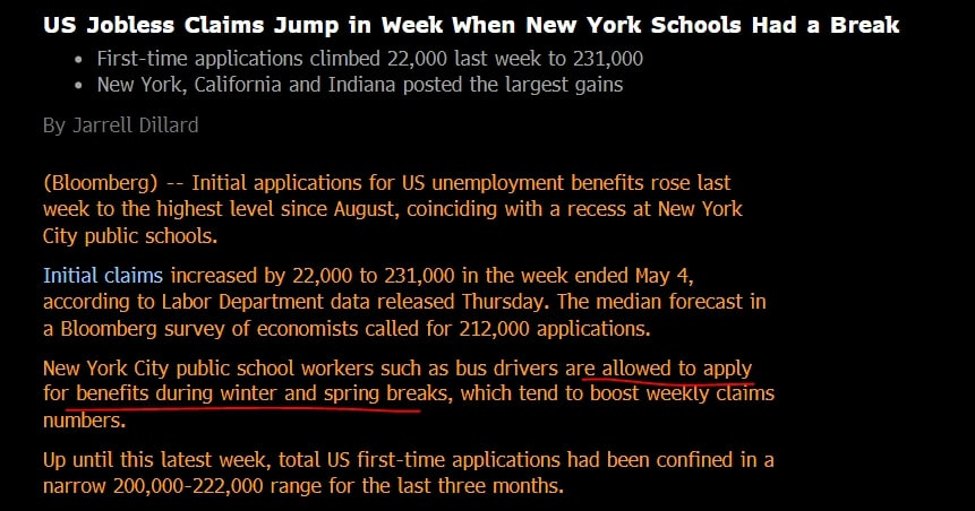Nongnuch Pitakkorn/iStock via Getty Images
This monthly article series shows a dashboard with aggregate industry metrics in technology and communication services. It may also serve as a top-down analysis of sector ETFs like Vanguard Information Technology ETF (VGT), Technology Select Sector SPDR ETF (XLK) and iShares U.S. Technology ETF (IYW), whose largest holdings are used to calculate these metrics. This month’s article will focus on Invesco Dorsey Wright Technology Momentum ETF (NASDAQ:PTF).
Shortcut
The next two paragraphs in italic describe the dashboard methodology. They are necessary for new readers to understand the metrics. If you are used to this series or if you are short of time, you can skip them and go to the charts.
Base Metrics
I calculate the median value of five fundamental ratios for each industry: Earnings Yield (“EY”), Sales Yield (“SY”), Free Cash Flow Yield (“FY”), Return on Equity (“ROE”), Gross Margin (“GM”). The reference universe includes large companies in the U.S. stock market. The five base metrics are calculated on trailing 12 months. For all of them, higher is better. EY, SY and FY are medians of the inverse of Price/Earnings, Price/Sales and Price/Free Cash Flow. They are better for statistical studies than price-to-something ratios, which are unusable or non-available when the “something” is close to zero or negative (for example, companies with negative earnings). I also look at two momentum metrics for each group: the median monthly return (RetM) and the median annual return (RetY).
I prefer medians to averages because a median splits a set in a good half and a bad half. A capital-weighted average is skewed by extreme values and the largest companies. My metrics are designed for stock-picking rather than index investing.
Value and Quality Scores
I calculate historical baselines for all metrics. They are noted respectively EYh, SYh, FYh, ROEh, GMh, and they are calculated as the averages on a look-back period of 11 years. For example, the value of EYh for hardware in the table below is the 11-year average of the median Earnings Yield in hardware companies.
The Value Score (“VS”) is defined as the average difference in % between the three valuation ratios (EY, SY, FY) and their baselines (EYh, SYh, FYh). The same way, the Quality Score (“QS”) is the average difference between the two quality ratios (ROE, GM) and their baselines (ROEh, GMh).
The scores are in percentage points. VS may be interpreted as the percentage of undervaluation or overvaluation relative to the baseline (positive is good, negative is bad). This interpretation must be taken with caution: the baseline is an arbitrary reference, not a supposed fair value. The formula assumes that the three valuation metrics are of equal importance.
Current data
The next table shows the metrics and scores as of writing. Columns stand for all the data defined above.
|
VS |
QS |
EY |
SY |
FY |
ROE |
GM |
EYh |
SYh |
FYh |
ROEh |
GMh |
RetM |
RetY |
|
|
Hardware |
-50.27 |
-19.05 |
0.0031 |
0.4966 |
0.0324 |
4.82 |
34.32 |
0.0338 |
0.9557 |
0.0368 |
6.22 |
40.68 |
6.52% |
73.63% |
|
Comm. Equip. |
-12.29 |
8.99 |
0.0223 |
0.2924 |
0.0307 |
19.97 |
61.02 |
0.0311 |
0.2648 |
0.0379 |
16.53 |
62.80 |
7.71% |
6.26% |
|
Electronic Equip. |
-7.61 |
5.17 |
0.0350 |
0.4797 |
0.0474 |
16.76 |
29.59 |
0.0395 |
0.7441 |
0.0382 |
13.37 |
34.81 |
8.29% |
23.53% |
|
Software |
-18.65 |
10.59 |
0.0217 |
0.1204 |
0.0257 |
22.84 |
81.95 |
0.0246 |
0.1554 |
0.0328 |
18.21 |
85.59 |
3.30% |
21.75% |
|
Semiconductors |
-39.68 |
6.73 |
0.0297 |
0.1328 |
0.0171 |
28.96 |
60.72 |
0.0438 |
0.2224 |
0.0320 |
24.90 |
62.49 |
5.29% |
31.37% |
|
IT Services |
-20.63 |
14.89 |
0.0363 |
0.1775 |
0.0240 |
33.55 |
58.74 |
0.0364 |
0.2987 |
0.0304 |
27.17 |
55.26 |
3.73% |
14.97% |
Value And Quality chart
The next chart plots the Value and Quality Scores by industries (higher is better).
Value and quality in technology (Chart: author; data: Portfolio123)

Evolution since last month
Quality has improved in electronic equipment.
Score variations (Chart: author; data: Portfolio123)

Momentum
The next chart plots momentum scores based on median returns.
Momentum in technology (Chart: author; data: Portfolio123)

Interpretation
Based on my monthly S&P 500 dashboard, information technology is one of the two most overvalued GICS sectors, along with industrials. However, the electronic equipment industry is close to 11-year averages regarding both valuation and quality. Communication equipment, software and IT services are moderately overvalued, by 12% to 21% relative to their historical baselines. The semiconductors and hardware industries are deeply overvalued. The latter also has the worst quality score.
Focus on PTF
Invesco Dorsey Wright Technology Momentum ETF started investing operations on 10/12/2006 and tracks the Dorsey Wright Technology Technical Leaders Index. It has 39 holdings and a net expense ratio of 0.60%. Capital-weighted technology ETFs like VGT and XLK have much cheaper management fees (0.10% and 0.09%, respectively). The underlying index selects and weighs constituents using a score based on price relative strength, and it is rebalanced quarterly. The aggregate weight of the five largest holdings is capped at 25%.
The fund is overweight in software companies (47.3% of asset value). Nonetheless, this is not a structural characteristic of the strategy, and the industry breakdown may change over time. The portfolio is quite concentrated: the top 10 holdings, listed below with fundamental ratios, represent 42.1% of assets in aggregate. However, no constituent weighs more than 5%, so risks related to individual companies are moderate.
|
Ticker |
Name |
Weight% |
EPS growth %TTM |
P/E TTM |
P/E fwd |
Yield% |
|
AppLovin Corp. |
4.91 |
859.93 |
49.44 |
28.80 |
0 |
|
|
NVIDIA Corp. |
4.75 |
585.45 |
76.54 |
36.62 |
0.02 |
|
|
Dell Technologies, Inc. |
4.44 |
35.76 |
30.72 |
17.67 |
1.33 |
|
|
KLA Corp. |
4.27 |
-22.19 |
38.25 |
31.25 |
0.79 |
|
|
Arista Networks, Inc. |
4.27 |
49.50 |
43.63 |
39.71 |
0 |
|
|
Broadcom Inc. |
4.10 |
-8.30 |
51.15 |
29.18 |
1.52 |
|
|
Cadence Design Systems, Inc. |
4.10 |
22.90 |
73.83 |
47.77 |
0 |
|
|
Fair Isaac Corp. |
4.09 |
27.09 |
71.05 |
57.36 |
0 |
|
|
Nutanix, Inc. |
3.90 |
83.57 |
N/A |
62.66 |
0 |
|
|
Synopsys, Inc. |
3.29 |
50.01 |
61.63 |
41.78 |
0 |
PTF has underperformed XLK by about 3.5% in annualized return since inception. It also shows a higher risk measured in standard deviation of monthly returns (“volatility” in the table below).
|
Total Return |
Annual Return |
Drawdown |
Sharpe |
Volatility |
|
|
PTF |
586.14% |
11.58% |
-55.38% |
0.52 |
23.29% |
|
XLK |
1076.21% |
15.06% |
-53.04% |
0.76 |
18.67% |
However, PTF has outperformed the sector benchmark over the last 5 years, as reported on the next chart. It shows a high volatility again.
PTF vs. XLK, 5-year return (Seeking Alpha)

PTF doesn’t look attractive as a long-term investment due to historical performance and high risk. However, high volatility may be an edge for investors seeking a swing-trading instrument in the technology sector.
Dashboard List
I use the first table to calculate value and quality scores. It may also be used in a stock-picking process to check how companies stand among their peers. For example, the EY column tells us that a semiconductor company with an Earnings Yield above 0.0297 (or price/earnings below 33.67) is in the better half of the industry regarding this metric. A Dashboard List is sent every month with the most profitable companies standing in the better half among their peers regarding the three valuation metrics at the same time. The stocks below are part of the list sent a few weeks ago, based on data available at this time.
|
Extreme Networks, Inc. |
|
|
Jabil, Inc. |
|
|
Cars.com, Inc. |
|
|
Axcelis Technologies, Inc. |
|
|
NXP Semiconductors N.V. |
|
|
Gen Digital Inc. |
|
|
InterDigital, Inc. |
It is a rotational model with a statistical bias toward excess returns on the long-term, not the result of an analysis of each stock.















